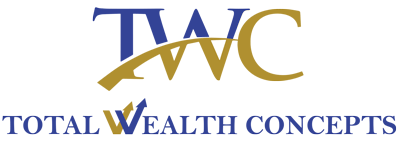Registered Education Savings Plan (RESP)
What is an RESP?
RESPs are registered education savings plans 1 that grow tax-deferred until beneficiary withdraws funds for post-secondary education. Students usually pay little or no tax on those funds when withdrawn as RESP contributions are nontaxable and students are at lower income tax rate.
What are the RESP contribution limits?
Currently, RESP has a lifetime contribution limit of $50,000 per beneficiary. Each beneficiary is eligible to receive a maximum of $7,200 - as Canada Education Savings Grant (CESG). Grant amounts are not included in the lifetime RESP contribution limit.
The Canada Education Savings Grant 2 is a grant from the Government of Canada paid directly into an RESP that provides between 20 and 40 cents for every dollar saved for a child's education, depending on your income. Only contributions to an RESP are eligible for the Canada Education Savings Grant if the beneficiary is 17 years of age or under.
That's a major plus along with earnings that grow tax-deferred until the child is ready for post-secondary education. There is usually little or no tax on those funds when withdrawn as RESP contributions are nontaxable and students are at lower income tax rate.
For example, if a family contributes $25 to an RESP every two weeks for a total of $650 per year, their RESP would receive a minimum Canada Education Savings Grant of $130, based on 20% of their total contributions.
If the family continues to contribute this amount each year for 15 years and we assume a 5% rate of return, the child would have $4,700 for each year of a four-year university program. Almost $800 a year would come directly from the grant.
The Amount of the CESG
Minimum RESP grant is 20% of RESP contribution and maximum of $5,000 - contribution during a year is eligible for grant provided beneficiary not fully utilized CES grant in the past.
The additional amount of the grant is based on your family income. The amount can change over time as your family income changes. No matter what your net family income is, the grant provides at least 20 cents for every dollar on the first $2,500 of annual RESP savings made on behalf of a child. Depending on your family income, your child could receive additional grant on RESP savings that you make after 2004 on behalf of a child. Check the CRA RESP website for the latest figures.
Your net family income is reported on your Canada Child Tax Benefit statement (commonly known as “baby bonus”, or “family allowance”) that you receive from Canada Revenue Agency each July.
Additional Canada Education Savings Grant (CESG)
In January 2011, the Federal Government revised the income brackets used to calculate the amount of additional CESG money available to Canadian families. These income brackets are indexed yearly.
In later federal budgets, the rules for RESPs were changed to make them far more attractive to parents saving for their child's education.
Some of the changes include the following:
- Universities, colleges, CEGEPS, vocational and technical schools are now included as eligible post-secondary institutions.
- Maximum RESP contribution in a calendar year that is eligible to receive CES grant is now $5,000, increased from $4,000 and previously $2,000.
- Lifetime RESP contribution limit per beneficiary is increased from $42,000 to $50,000.
- There are more options for the parent if the child does not attend post-secondary school or does not complete the program. Previously a contributor could lose all the income earned by their RESP contributions if the child did not pursue a post-secondary education. That growth income stayed in the group plan for the benefit of students who did go on and complete their education. Only the original contributions would be returned to the parent.
- Ottawa now allows RESP contributors to transfer up to $50,000 in interest earned in a registered education savings plan to their RRSP if they have sufficient contribution room.
Check the Canadian Education Saving Grant website for the latest figures about the Additional Canada Education Savings Grant.
Financial institutions offering RESPs are not required to include all of the changes proposed by the government. This means that RESP plans from different financial institutions may have different features, exclusions and limitations. Carefully review the different plans you are considering, and choose the one that meets your requirements.
What are the two types of RESPs available? To keep it simple, for the moment: Scholarship Trust RESPs put your contributions into a pool with other contributors and invest it for you. Self-directed RESPs let you select investments from thousands of mutual funds available or other investment choices. RESP plans can be set up for one child or several children in a family plan. We'll cover the differences in more detail with a profile of each of the plan types.
Why is investing in an RESP better than saving outside an RESP? According to the Federal Budget of 1998, saving inside an RESP with the Canada Education Savings Grant can create an education fund worth 40% more than saving outside an RESP.
A family saving outside an RESP could see their savings of $25 every two weeks over a 15-year period amount to $13,304 after tax, assuming a 5% market rate of return. That same contribution, growing tax-free in an RESP, without a Canada Education Savings Grant, would total $15,666.
When the Canada Education Savings Grant is added to the RESP contributions each year, the total for those same contributions reaches $18,790. (Based on 20% of the total contributions.)
Contact our office for more information about RESP accounts.
More information can also be found at: CanLearn.ca
1CRA, Government of Canada
2CRA, Government of Canada
Our Dealership



